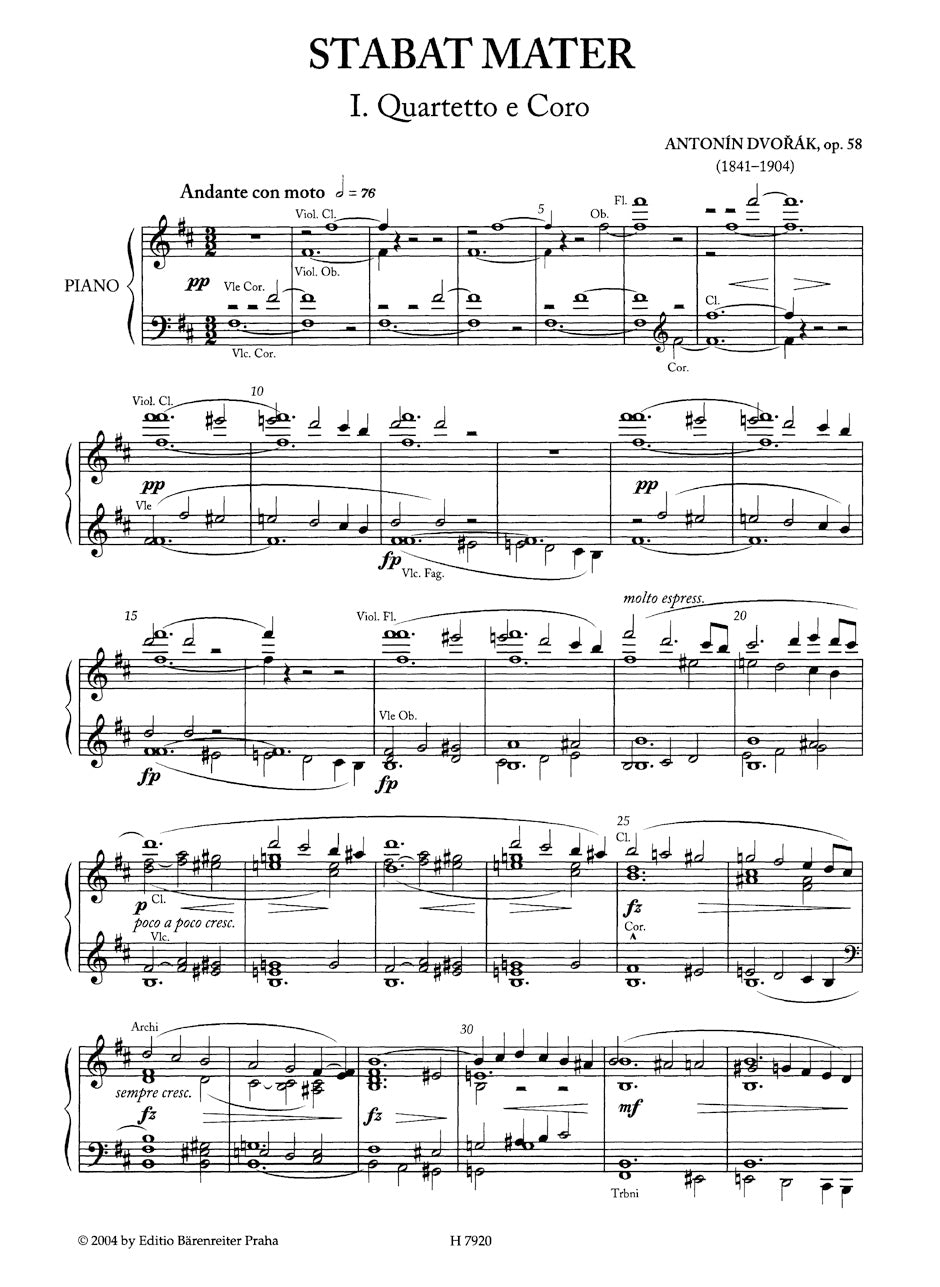

BARENREITER - 345062
Dvorak Stabat Mater op. 58 (Version in 10 movements)
Composer: Antonín Dvořák
Publisher: Bärenreiter
Format: Choral Score
Binding: Paperback
Dimensions: 10.6 in x 7.5 in
Pages: 183
Dvorak Stabat Mater op. 58 (Version in 10 movements)
Juilliard Store
144 West 66th Street
New York NY 10023
United States
Choose options
Dvorak Stabat Mater op. 58 (Version in 10 movements)
Juilliard Store
144 West 66th Street
New York NY 10023
United States
Dvorak Stabat Mater op. 58 (Version in 10 movements)
Juilliard Store
144 West 66th Street
New York NY 10023
United States
Editor: Kachlík, Jan / Srnka, Miroslav
Orchestral scoring : SSolo/ASolo/TSolo/BSolo/Mixed choir-SATB/Orch
Language(s) of work: L
Language(s) of text: L
Product format: vocal score, Urtext edition
Binding: Paperback
Pages / Format: IX, 183 - 27,0 x 19,0 cm
As far as possible, this Urtext edition makes use of Dvorak's distinctive piano stylisation which has survived in his own first sketch of the work from 1876. This sketch, as it turned out, once this source had become accessible, is in fact a complete, seven-movement piano version with all solo and choral parts. The degree to which the musical content of this source has been developed, and its relative completeness, suggest that the composer had originally been forced to resign himself to a performance of the work only with soloists, choir and piano.
In the years of 1876-1877, however, Dvorak's career evidently took a turn for the better as he found himself increasingly in greater demand. He expanded the cantata by a further three movements and later orchestrated the entire work.
This edition serves on the one hand as a legitimate piano reduction of the existing edition of the final orchestral version. On the other hand, together with the revision commentary and facsimiled appendices, it also provides an overall picture of the original piano version for the first time, in particular, of the seven movements from 1876.
In addition to this piano score, the orchestral score, complete orchestral parts and study score are also available.
The performance material both to the version for orchestra and to the seven-movement original piano version (Versione 1876) is available on hire.
